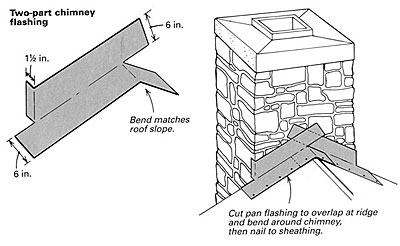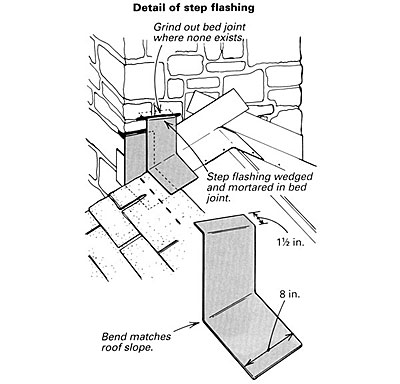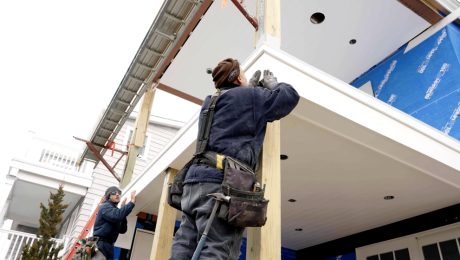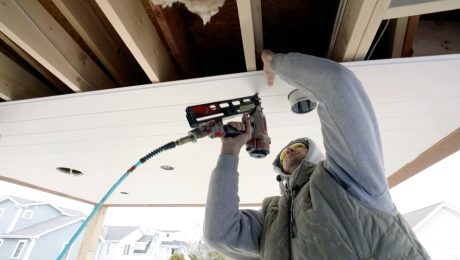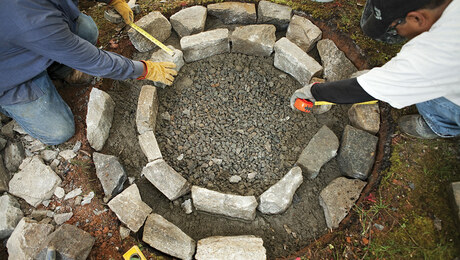Q:
I recently bought a house that’s got an uncoursed-fieldstone chimney. Inside the house, there are water stains and dampness around the chimney. When I went up on the roof, I noticed that the chimney flashing was merely placed against the stone and slopped full of roofing cement. How can I install new flashing correctly?
William W. Singelman, Umiat, AK
A:
John C. Friedrichs, a stonemason in Lexington, Virginia, replies: First, be sure your chimney is structurally sound. Check all joints between stones to be sure they are filled with mortar, and make sure the chimney cap is solid. Then remove the old flashing from the chimney and the roof. Clean off the roofing cement as best you can.
Look for places on the chimney where you can dig out horizontal, or bed, joints. You will insert the new flashing in these joints. The joints should step up the chimney so that they roughly match the roof slope. Dig the joints 1-1/2 in. to 2 in. deep and at least 1/2 in. wide. If no bed joint exists where it should be, use a disk grinder with a 4-in. or 5-in. abrasive disk to cut one.
Once you’ve cut all your bed joints, cut your flashing from roofing-grade galvanized sheet metal or copper. Chimney flashing is actually a two-part affair. The first part is a one-piece pan that is bent at a right angle and laid with one leg against the chimney and the other on the roof. Each leg should be about 6 in. wide. On each end of the pan flashing, cut about 1-1/2 in. along the bend at both ends so that the flashing bends around the chimney at the bottom and overlaps at the ridge. Once the pan flashing is in place, nail it to the roof sheathing and lay the shingles over the flashing.
Next, cut pieces of step flashing to go into the prepared bed joints and overlap the pan flashing. Each piece of step flashing going up the chimney should overlap the lower piece by at least 1-1/2 in. To secure the step flashing in the bed joints, cut small wood shims and temporarily wedge the flashing into place. Then either mortar the flashing in place or thoroughly caulk it with silicone material. This two-part flashing provides a flexible overlapping joint that can accommodate the movement of the house as related to the chimney, but the flashing still sheds water.
